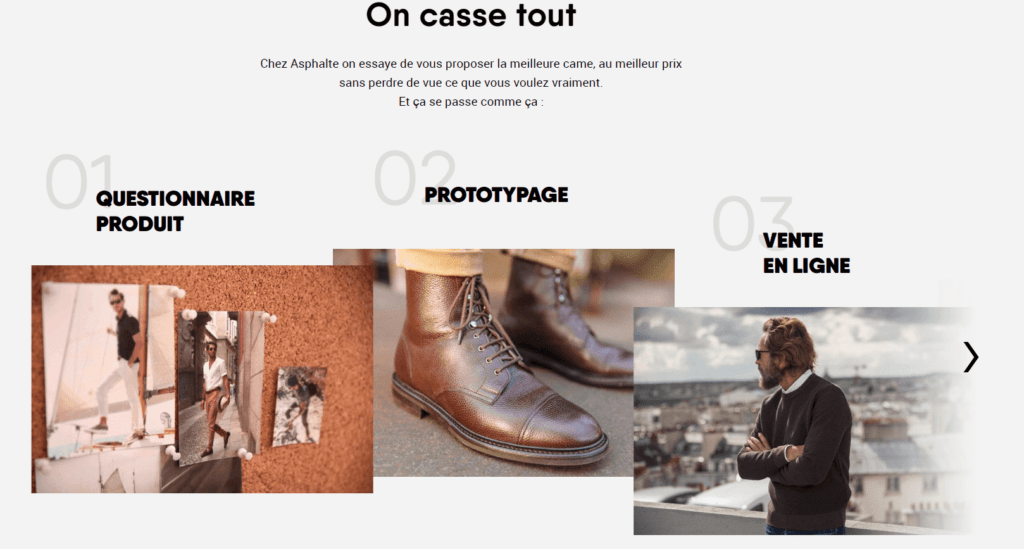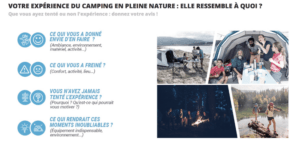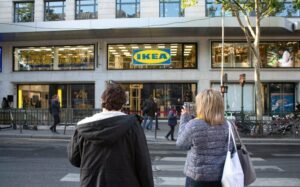Two weeks ago, the brand-new Ikea Madeleine, "designed by and for Parisians" in the words of its director Annie Bétreau, caused a stir and a record number of visits, with 29,000 visitors on opening day.
Imagined by 1,200 Parisian Ikea Family members via a co-creation platform and designed as an "extension of their apartment", its opening has reinvented the concept of co-creation.
This concept at the heart of participative marketing seems to have all the elements of a win-win relationship. What are the pros and cons of this strategy? Does it guarantee customer satisfaction? Are "conso-makers" really becoming consumers?
Deciphering co-creation
Co-creation or crowdsourcing is about putting the customer back at the center of the value-creation process, on the premise that a customer who is involved in the design of a product is more likely to buy it. It differs from one-to-one collaborations between a brand and an influencer, or from personalization, which is carried out by the customer, for the customer, and generally at a higher price.
Customer involvement in the creation of a product can take place at various key points in the process: upstream in the ideation phase, at the product design stage, during the testing phase to adjust assumptions, or even after the product has been marketed, by sending out customer questionnaires.
Co-creation: a guarantee of success?
There's a reason why co-creation is so popular. Indeed, consumers, are becoming increasingly demanding when it comes to product quality, so much so that 62% of French people said they would like to help their favorite brand create products and services(Baromètre de l'utilité des marques 2018, Opinionway & Supper).
Co-creation seems to offer a number of advantages: the offer is more relevant thanks to a deeper understanding of consumer needs and aspirations, and the risk of commercial failure is reduced. The brand-customer relationship takes on a new, more authentic and accessible dimension, or, if the co-creation workshops take place on the brand's premises, increases the brand's transparency vis-à-vis its customers.
It can also be used to move from a "product story" to a " people story ", by recounting the experience of the customers involved, who have become more than just consumers - they've become ambassadors. This story-telling can provide content that can be used on social networks to animate the brand's community and increase its visibility. Co-creation also makes it possible to spread knowledge by organizing a holistic reflection in which all points of view are represented in the service of the customer experience.
However, co-creation approaches need to be meticulous in every detail, as they present two major risks. Firstly, the consumers involved in the creative process, although supposed to be representative of the company's target audience, may imagine a product that meets their expectations and needs, but which will not completely satisfy those of the final customers when the product is industrialized. The validation phase with a broader customer base is therefore a crucial step. It is crucial that the result of customer co-creation is in line with the brand's image, if consumers are to be satisfied.
Furthermore, it's important to bear in mind that co-creation is not an end in itself, unlike the profitability objective of companies. In other words, co-creation is only worthwhile if it can be used to justify a return on investment, in-depth consumer knowledge or increased brand awareness. More than a purely marketing tool, co-creation must have a business goal, and be based on key success factors in consumer involvement, to be identified when preparing the approach.
More or less aware of these risks, companies have embarked on this strategy... with contrasting results.
Some examples of co-creative strategies

Asphalte Parisa two-year-old menswear brand, operates on a co-creation model that pushes the boundaries of traditional post-purchase customer feedback. The brand determines its flagship garment of the moment, then sends its customers a questionnaire designed to identify the problems they usually encounter with this type of garment, as well as their expectations. In other words, the customer is involved in the ideation phase. Once these criteria have been determined, the brand designs a garment that perfectly meets its customers' expectations. Two years later, customers are more enthusiastic than ever, and the reviews are glowing.
Oxybul, a brand of early-learning and children's games, got involved in this process very early on, setting up in 1993 a community of Pilot Parents who are regularly invited to test new products with their children aged 0 to 12, involving their customers in the validation phase. Tests are carried out at Oxylunch events or during days spent in the Oxylab. Following these tests, children can continue to play with the products and make them their own for 10 days before returning them to the brand, which then rates them out of 10 based on the parents' feedback. Such was the success of the program that Oxybul celebrated 26 years of crowdsourcing.

Décathlon also embraced this collaborative approach early on, launching its " Open Oxylane " platform online in 2014, enabling all Internet users to propose their ideas. Customers imagine the products of their dreams, fill in their description, attach a sketch or an explanatory video and let other users vote for their favorite projects. After a month, the project owner is given the chance to have his say, and Décathlon decides whether or not to support him in his production. A year and a half later, in 2016, Décathlon opened a space in Villeneuve l'Ascq called " Alive ", where customers, employees and partners can preview products and take part in experimentation during creative workshops. Today, the "Décathlon Création" platform enables consumers to test prototyped products in order to validate their production launch. The latest initiative is the " powered by FANVOICE " camping campaign, which aims to identify customer desires via an online questionnaire designed to provide feedback.

While in some cases, co-creation initiatives are often the source of incremental innovation, they rarely foster radical innovation. As an example, the co-creation site " My Starbucks Idea " was launched 5 years ago by the brand to put innovation back at the heart of their strategy. 5 years, 150,000 ideas, 2,000,000 votes and millions of visits later, the colossal marketing success of this operation has not led to the deployment of major innovations, but rather to the emergence of products such as the Frappucino Coconut, or the introduction of eco-innovative practices such as the creation of recyclable cups.
What's more, the results of customer experiments must be interpreted with caution, as demonstrated by the failure of New Coke, as recounted by Malcolm Gladwell in his book Blink, published in 2005. Gladwell explains that comparative tests were carried out in 1985 on Pepsi and Coke customers, who, on the basis of one glass, declared Pepsi better because it was sweeter. Following these results, Coca Cola launched the production of a Coke more similar in taste to Pepsi: New Coke. After 40,000 letters of complaint, Coca Cola was forced to admit commercial failure, as the sweet taste of the bottle format did not meet consumer expectations. So it's vital to ensure that customer tests are realistic and sustainable.
While co-creation operations can be seen as a sign of humility on the part of the brand, recognizing its limits in terms of identifying customer needs, they have often been criticized for being perceived as marketing manipulation.
Indeed, what better sales argument than the legitimization of one's offer by its upstream construction by customers? To avoid this pitfall, brands need to be able to let go and give free rein to their customers' imagination, without neglecting the importance of then deciding on the option that best respects the brand's image and spirit, and guarantees the highest level of customer acceptance. If brands don't feel ready to set out in search of this balance, they can nevertheless start by putting themselves in their customers' shoes, bearing in mind that, before being retail professionals, they are first and foremost consumers.




